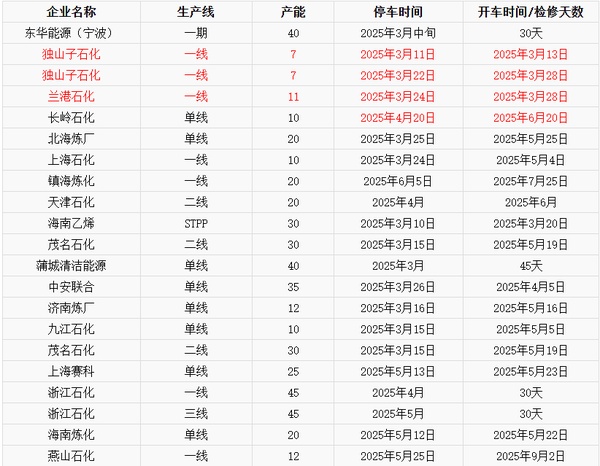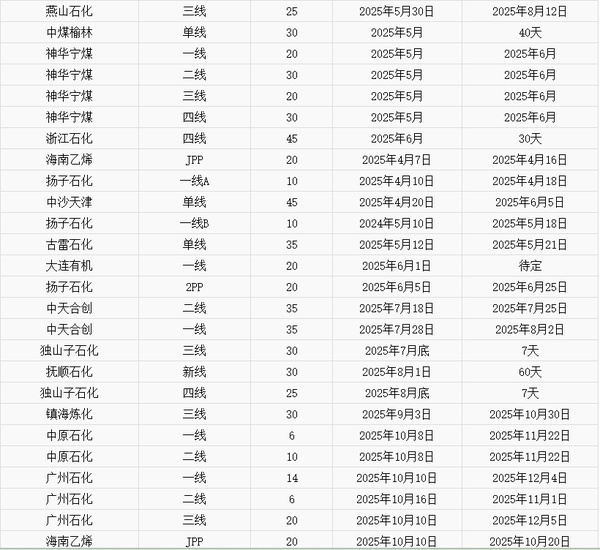The growth rate of polypropylene capacity has slowed down; is there hope for easing the supply-demand contradiction?
Introduction: In February, market prices fell across the board, with a decline of 20-100 yuan/ton. During the first half and mid-month, inventory was actively consumed, easing spot contradictions, leading to a weak consolidation in prices. However, at the end of the month, poor trading combined with the return of supply intensified the contradiction for polypropylene, opening up a downward price channel. With the "Golden March, Silver April" period approaching, can PP prices see a breakthrough in March? Next, we will conduct an in-depth analysis from multiple dimensions such as current inventory status, supply changes, demand expectations, and policy impacts.
I. Inventory Depletion Delayed, Market Prices Decline
![[Longzhong Focus]: Delayed Inventory Depletion, Can PP Prices Break Through in March? [Longzhong Focus]: Delayed Inventory Depletion, Can PP Prices Break Through in March?](https://oss.plastmatch.com/zx/image/06bb0bdebea34dab9ff68a518951df89.png)
Source: Longzhong Information
Entering 2025, the problem of PP inventory depletion continues to trouble the market. After the Spring Festival holiday, petrochemical inventories were at high levels. Although downstream enterprises gradually resumed operations, the recovery in demand did not meet expectations. According to Longzhong's data, in February, there were relatively few maintenance shutdowns among domestic polypropylene producers, keeping the market supply at a high level. While downstream operating loads have increased, factories are cautious about purchasing, mainly focusing on consuming existing inventories, which has made it difficult for market transactions to expand.
Entering 2025, the issue of PP inventory reduction continues to trouble the market. After the Spring Festival holiday, petrochemical inventories are at a high level. Although downstream enterprises have gradually resumed operations, the recovery in demand has fallen short of expectations. According to Longzhong data, there were relatively few maintenance shutdowns of polypropylene production facilities in China in February, with market supply remaining at a high level. While the operating load of downstream factories has increased, procurement intentions from these factories remain cautious, mainly focusing on consuming existing inventories, which makes it difficult for market transactions to increase significantly.In this situation, the slow pace of inventory reduction by petrochemical companies and intermediaries is putting significant downward pressure on market prices. In February, the PP market price showed an overall trend of fluctuating downward. Although the price trends in the three major regions diverged, the overall price level decreased slightly compared to the previous month. For example, in the North China region, due to concentrated maintenance after the festival, price support was relatively strong, but over time, under the influence of the overall market atmosphere, prices also struggled to maintain an upward trend.
In this situation, the slow pace of inventory reduction by petrochemical companies and intermediaries is putting significant downward pressure on market prices. In February, the PP market price showed an overall trend of fluctuating downward. Although the price trends in the three major regions diverged, the overall price level decreased slightly compared to the previous month. For example, in the North China region, due to concentrated maintenance after the festival, price support was relatively strong, but over time, under the influence of the overall market atmosphere, prices also struggled to maintain an upward trend.II. Continuous Benefits from Maintenance, New Capacity Lower than Expected
II. Continuous Benefits from Maintenance, New Capacity Lower than Expected II. Continuous Benefits from Maintenance, New Capacity Lower than ExpectedTable 2: Overview of 2025 PP Granule Plant Shutdown Plans
Table 2: Overview of 2025 PP Granule Plant Shutdown PlansTable 2: Overview of 2025 PP Granule Plant Shutdown PlansUnit: Ten Thousand Tons/Year
Unit: Ten Thousand Tons/YearUnit: Ten Thousand Tons/Year





On the supply side, maintenance plans have had a certain impact on the market. Since February, some facilities in North China, East China, and South China have undergone maintenance. Entering March, it is expected that the maintenance wave will further expand. According to Longzhong Information, the capacity affected by maintenance in March may be more concentrated in the East China and South China regions. The reduction in supply due to maintenance theoretically provides some support for prices.
Regarding new capacity, the large-scale new capacity planned for 2024-2025 has seen slower progress than expected. Some projects have been delayed for various reasons, which has somewhat alleviated market supply pressure. For example, some projects originally scheduled to start production at the beginning of the year are still in the construction or commissioning phase and have not yet made a substantial impact on the market.
III. "Golden March" supports rigid demand, new policies from the Two Sessions are worth looking forward to
III. "Golden March" supports rigid demand, new policies from the Two Sessions are worth looking forward toIII. "Golden March" supports rigid demand, new policies from the Two Sessions are worth looking forward to![[Longzhong Focus]: Slow Inventory Depletion, Can PP Prices Break Through in March? [Longzhong Focus]: Slow Inventory Depletion, Can PP Prices Break Through in March?](https://oss.plastmatch.com/zx/image/424ad3e0724348b0a5da7f95adc970f9.png)
![[Longzhong Focus]: Slow Inventory Depletion, Can PP Prices Break Through in March? [Longzhong Focus]: Slow Inventory Depletion, Can PP Prices Break Through in March?](https://oss.plastmatch.com/zx/image/424ad3e0724348b0a5da7f95adc970f9.png)
From the demand side, March is traditionally seen as a "Golden March" for rigid demand, with downstream industry demand expected to see a seasonal rebound. The demand for PP from industries such as plastic weaving, injection molding, and BOPP will gradually increase. As the operating rates of downstream factories further improve, if order volumes can grow in tandem, it will provide strong support to the PP market.
In addition, the convening of the Two Sessions has brought policy expectations to the market. The government may introduce a series of policies to stimulate the economy and promote consumption, which will indirectly affect the demand of downstream industries for PP. For example, the strengthening of infrastructure construction may boost the demand for plastic products like pipes; consumption stimulus policies may enhance the production enthusiasm in the home appliance and daily necessities sectors, thereby increasing the procurement volume of PP.
IV. Future Forecast
IV. Future Forecast IV. Future ForecastConsidering multiple factors, the PP market will remain in a state of supply and demand competition in the short term. Although inventory reduction is slow, with the continuous release of maintenance benefits in March and the seasonal recovery of downstream demand, the market is expected to gradually improve. If the policies introduced during the Two Sessions can effectively stimulate downstream industry demand, and new production capacity remains relatively stable, PP prices are expected to see some breakthroughs in March.
However, there is still uncertainty in the market. If the recovery of downstream demand falls short of expectations, or if maintenance facilities resume production earlier than planned, it will hinder price increases. In addition, fluctuations in international crude oil prices will also affect PP costs, thereby impacting market price trends. Therefore, it is necessary to closely monitor policy developments, facility operations, and crude oil price fluctuations to accurately grasp the future direction of the PP market.
【Copyright and Disclaimer】The above information is collected and organized by PlastMatch. The copyright belongs to the original author. This article is reprinted for the purpose of providing more information, and it does not imply that PlastMatch endorses the views expressed in the article or guarantees its accuracy. If there are any errors in the source attribution or if your legitimate rights have been infringed, please contact us, and we will promptly correct or remove the content. If other media, websites, or individuals use the aforementioned content, they must clearly indicate the original source and origin of the work and assume legal responsibility on their own.
Most Popular
-

List Released! Mexico Announces 50% Tariff On 1,371 China Product Categories
-

Nissan Cuts Production of New Leaf EV in Half Due to Battery Shortage
-

New Breakthrough in Domestic Adiponitrile! Observing the Rise of China's Nylon Industry Chain from Tianchen Qixiang's Production
-

Dow, Wanhua, Huntsman Intensively Raise Prices! Who Controls the Global MDI Prices?
-

Mexico officially imposes tariffs on 1,400 chinese products, with rates up to 50%






